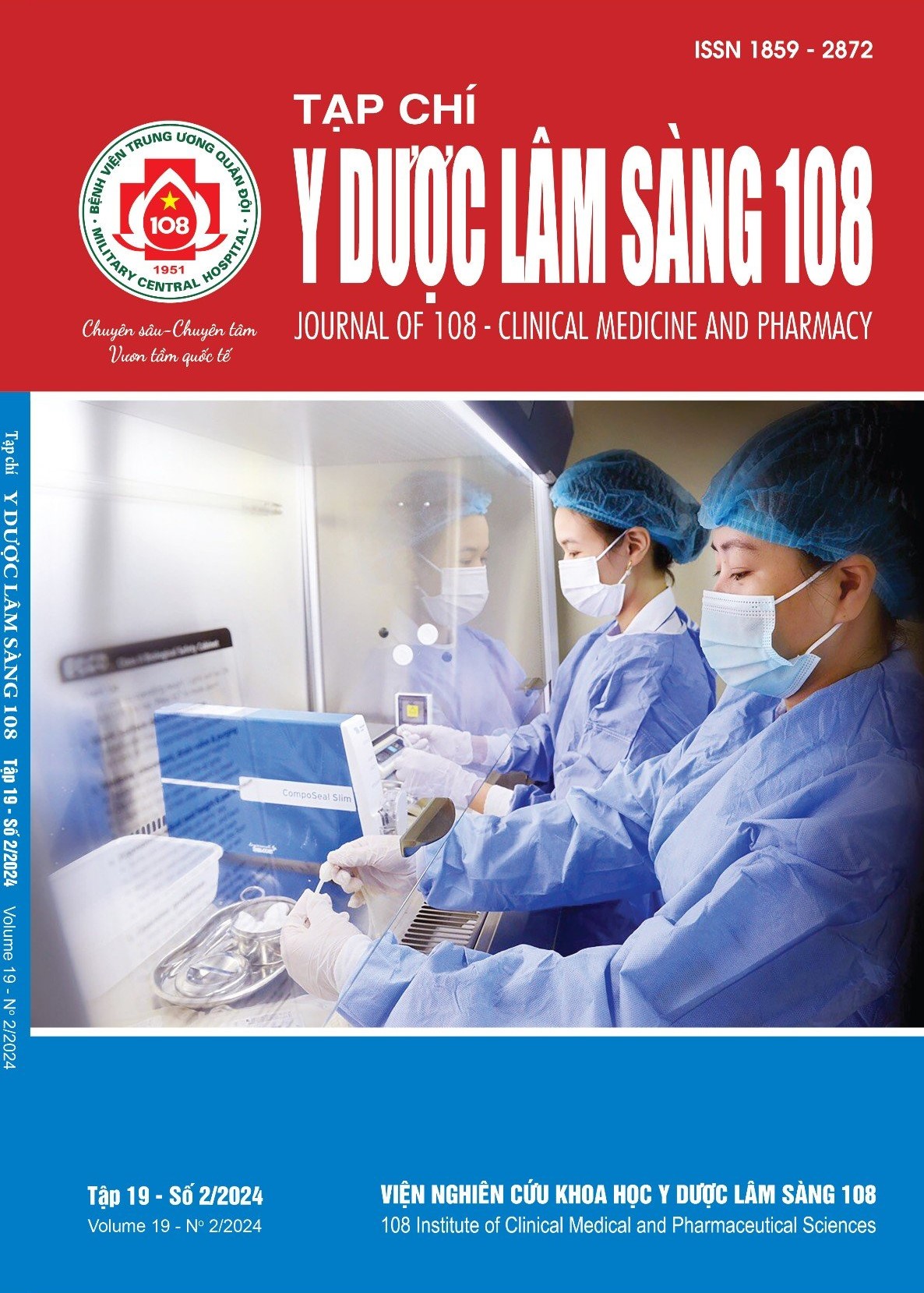Association between total IgE serum concentrations and clinical and sub-clinical characteristics of children with atopic dermatitis
Main Article Content
Keywords
Abstract
Objective: To investigate the association between total IgE serum and clinical and sub-clinical characteristics of children with atopic dermatitis (AD). Subject and method: Cross-sectional descriptive study conducted on 139 atopic dermatitis patients aged 2-12 years old who came for examination and treatment at the National Hospital of Dermatology & Venereology from September 2022 to August 2023. Result: Among the studied patients, the average total IgE serum concentration was 709.6 ± 1000.4IU/ml, the number of patients with high IgE serum concentration accounted for 74.8%. The group with a family history of allergic disease had a total IgE concentration 1.4 times higher than the group without family history (p<0.01). The total IgE serum concentration of patients with mild AD was significantly lower than that of moderate and severe patients. The group with a high blood eosinophil count had a total IgE serum concentration 1.3 times higher than the group with a normal blood eosinophil count (p=0.01). No relationship was found between gender, epidemic history, disease stage and total IgE serum concentration. Conclusion: Total IgE concentration has a suggestive value in diagnosing atopic dermatitis in children, especially in AD children with a family history of allergic diseases. Total IgE testing also helps to predict the severity of AD in children.
Article Details
References
2. Furue M, Chiba T, Tsuji G et al (2017) Atopic dermatitis: Immune deviation, barrier dysfunction, IgE autoreactivity and new therapies. Allergol Int. 66(3): 398-403. doi:10.1016/j.alit.2016.12.002.
3. Amarasekera M (2011) Immunoglobulin E in health and disease. Asia Pac Allergy 1(1): 12-15. doi:10.5415/apallergy.2011.1.1.12.
4. Trương Tiểu Vi, Nguyễn Tất Thắng, Văn Thế Trung (2018) Nồng độ IgE huyết thanh toàn phần và đặc hiệu trên bệnh nhân viêm da cơ địa tại bệnh viện
Da liễu Thành phố Hồ Chí Minh. chí Y học
Thành phố Hồ Chí Minh 22(4), tr. 125-129.
5. Aung T (2019) Immunoglobulin E tests. DermNet NZ, Australia.
6. Schäfer T, Heinrich J, Wjst M, Adam H, Ring J, Wichmann HE (1999) Association between severity of atopic eczema and degree of sensitization to aeroallergens in schoolchildren. J Allergy Clin Immunol 104(6): 1280-1284. doi:10.1016/s0091-6749(99)70025-4.
7. Phạm Diễm Hương (2019) Mối liên quan giữa nồng độ IgE toàn phần và mức độ bệnh viêm da cơ địa trẻ em. Luận văn Thạc sĩ Y học. Trường Đại học Y Hà Nội.
8. Kumar MK, Singh PK, Patel PK (2014)
Clinico-immunological profile and their correlation with severity of atopic dermatitis in Eastern Indian children. J Nat Sci Biol Med 5(1): 95-100. doi:10.4103/0976-9668.127296.
9. Kiiski V, Karlsson O, Remitz A, Reitamo S (2015) High serum total IgE predicts poor long-term outcome in atopic dermatitis. Acta Derm Venereol 95(8): 943-947. doi:10.2340/00015555-2126.
10. Vaneckova J, Bukač J (2016) The severity of atopic dermatitis and the relation to the level of total IgE, onset of atopic dermatitis and family history about atopy. Food Agric Immunol 27(5): 734-741. doi:10.1080/09540105.2016.1183598.
 ISSN: 1859 - 2872
ISSN: 1859 - 2872
